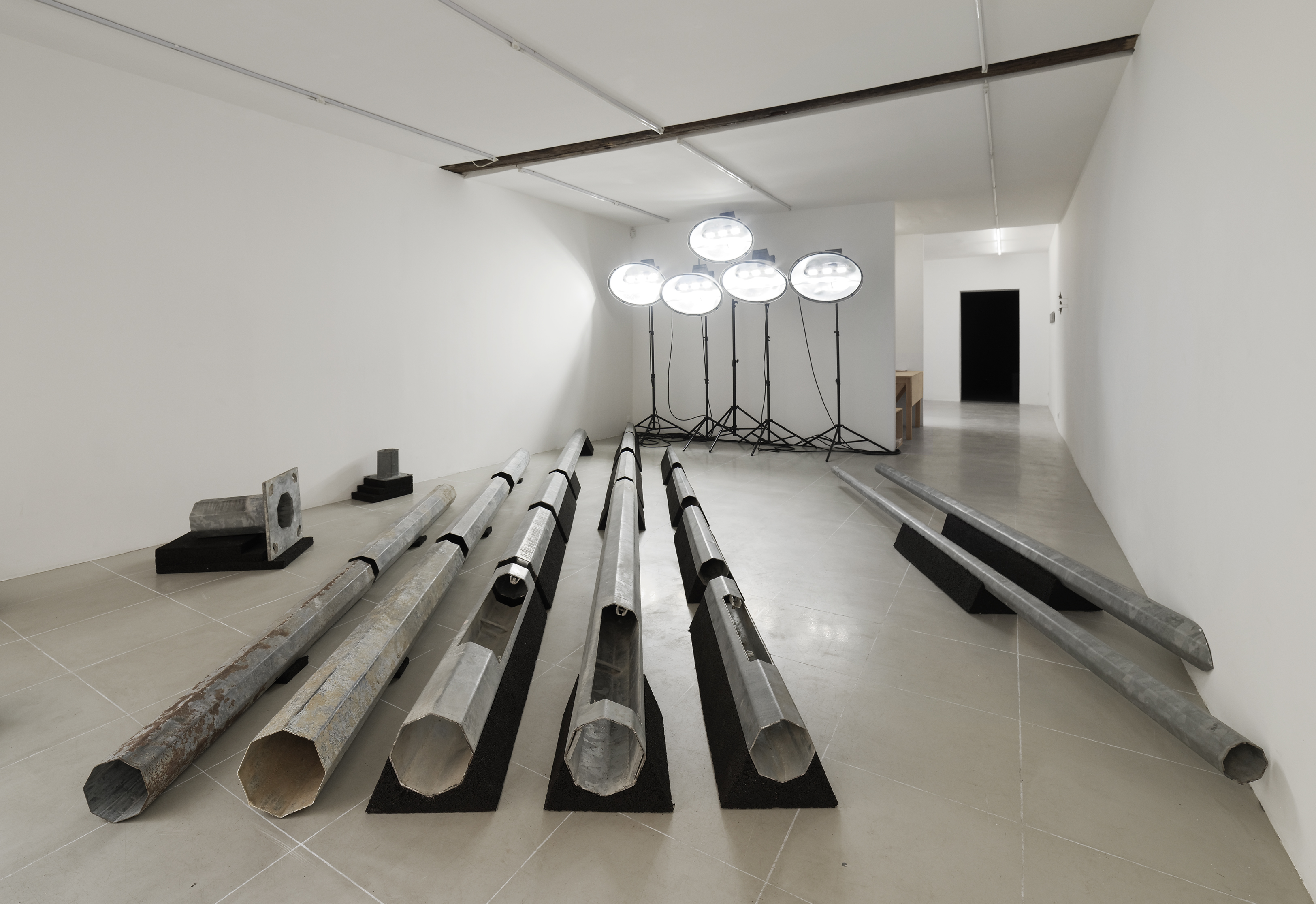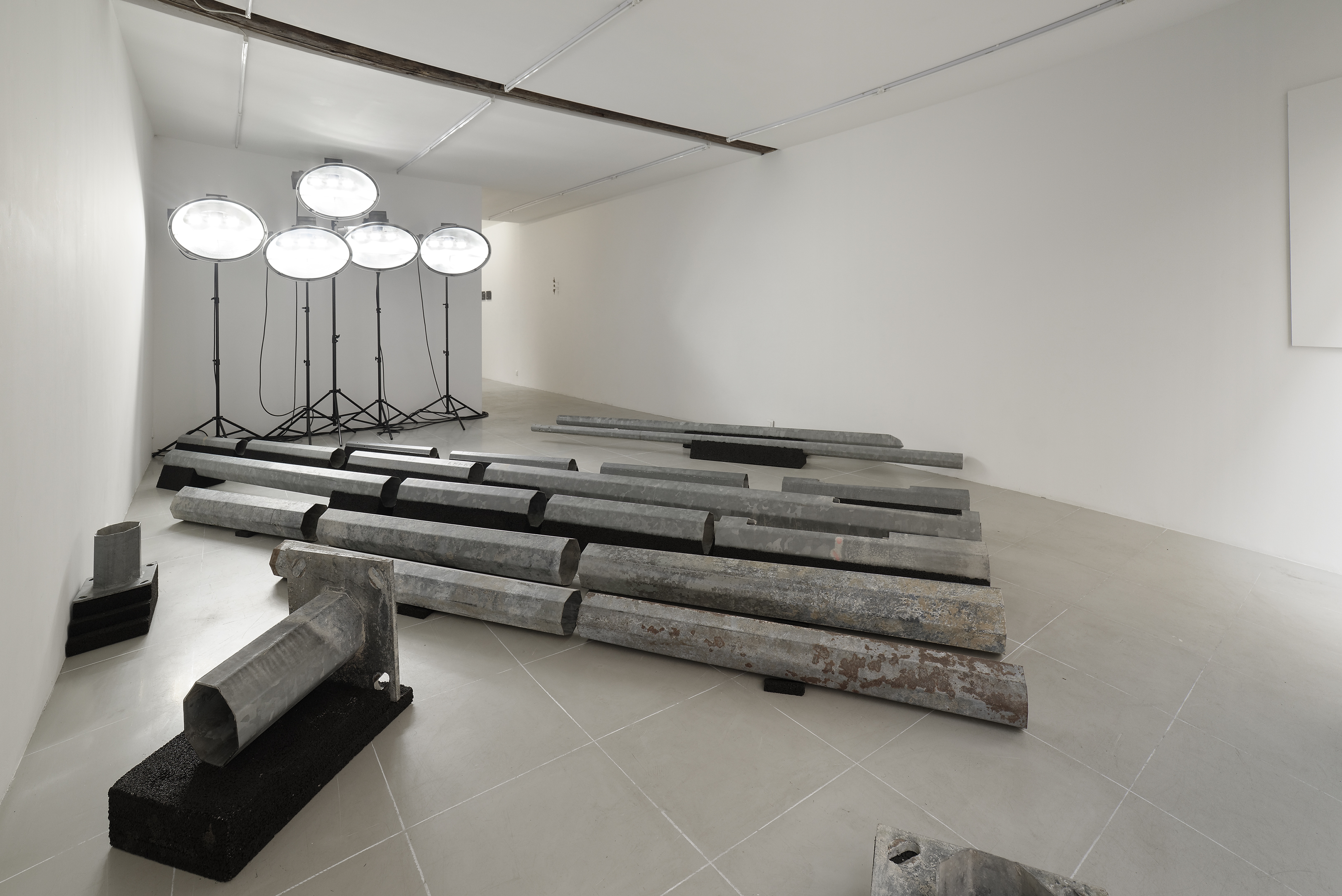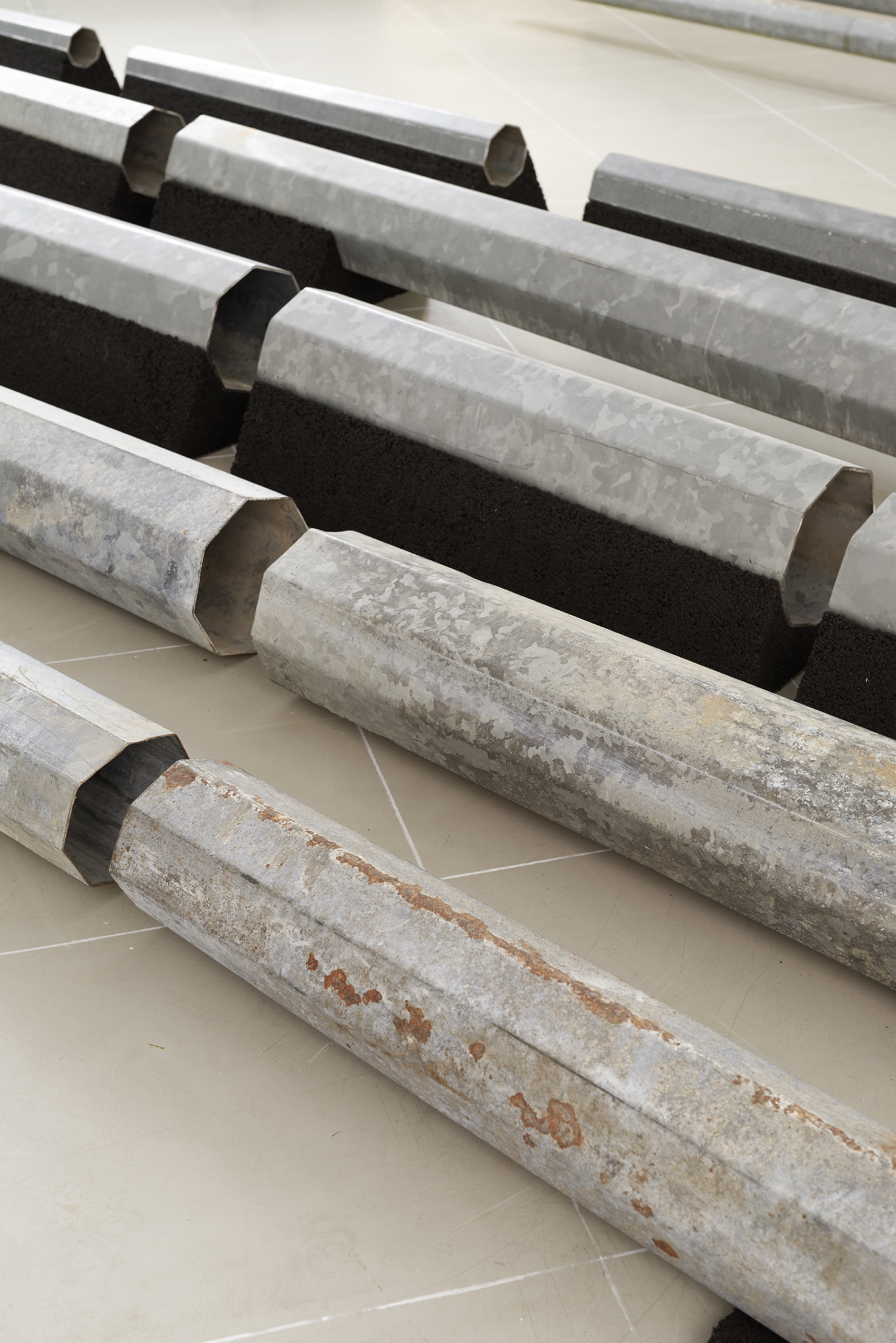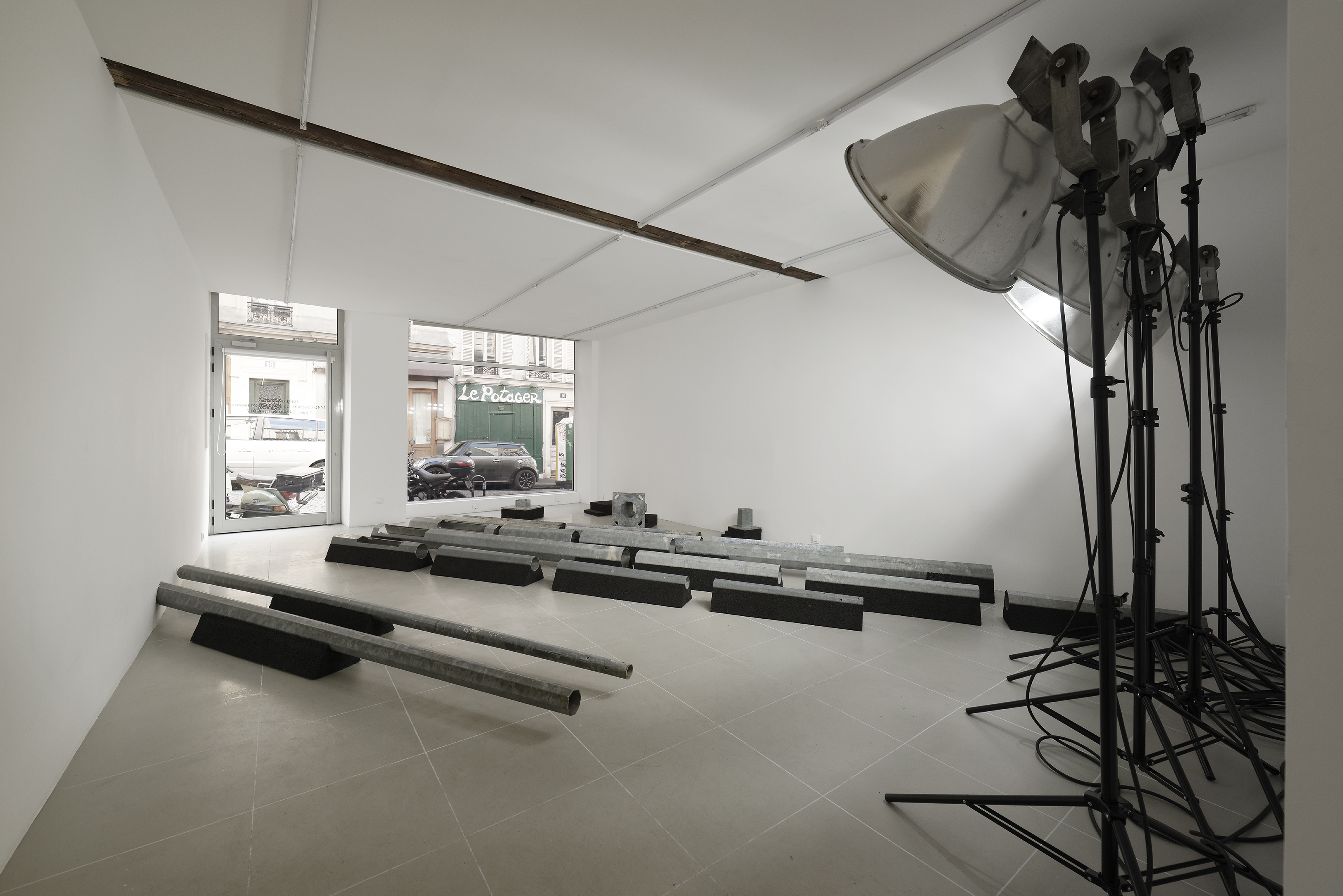1440 Couchers de Soleil par 24 Heures

Between the World Cup in 1998 and the Euro Cup in 2016, cameras (SD,
to HD to 6K) and dizzying corporate and policing algorithms, have
produced and captured the slippages of profiles in and around the Stade
de France. The stadium is a juridical state of exception, with its own
state assigned police brigade (Transversal Service of Event
Agglomerations, S.T.A.D.E), and full fledged on site prison. Here in the
stadium, which is located in the north-eastern outskirts of Paris,
“inner-city youth” converge to morph into at times consuming fans, at
times global football stars, rowdy supporters or international
terrorists.
Colin Dayan, who treats “the legal history of dispossession as a continuum along which bodies and spirits are remade,” claims that “it is through law that persons, variously figured, gain or lose definition, become victims of prejudice or inheritors of privilege.” Aivazian is interested in a history of quantifiable logics as they are applied to sports and policing.
Colin Dayan, who treats “the legal history of dispossession as a continuum along which bodies and spirits are remade,” claims that “it is through law that persons, variously figured, gain or lose definition, become victims of prejudice or inheritors of privilege.” Aivazian is interested in a history of quantifiable logics as they are applied to sports and policing.
Quantification, far from being applied according to stable à priori
needs, creates subjects with variable legalities: from the proliferation
of street lighting as a tool to curb crime, to the history of curfews,
from GPS tracking sensors to surveillance software, Aivazian surveys
these technologies and the kinds of subjects they sculpt in the hands of
the law and capital.
In this series of installations, Aivazian seeks to enact various instances of the deployment of light and darkness within public space and sports, reflecting on the double-edged abilities of lighting systems to expose, highlight or dissimulate subjects. The spaces are structured like material indexes, posing limbs and skins from stadiums and public spaces —namely floodlights, chalk, electric poles and asphalt— alongside an iconography of motion tracking —namely grids and heatmaps.
In this series of installations, Aivazian seeks to enact various instances of the deployment of light and darkness within public space and sports, reflecting on the double-edged abilities of lighting systems to expose, highlight or dissimulate subjects. The spaces are structured like material indexes, posing limbs and skins from stadiums and public spaces —namely floodlights, chalk, electric poles and asphalt— alongside an iconography of motion tracking —namely grids and heatmaps.
Kadist, Paris, FR




